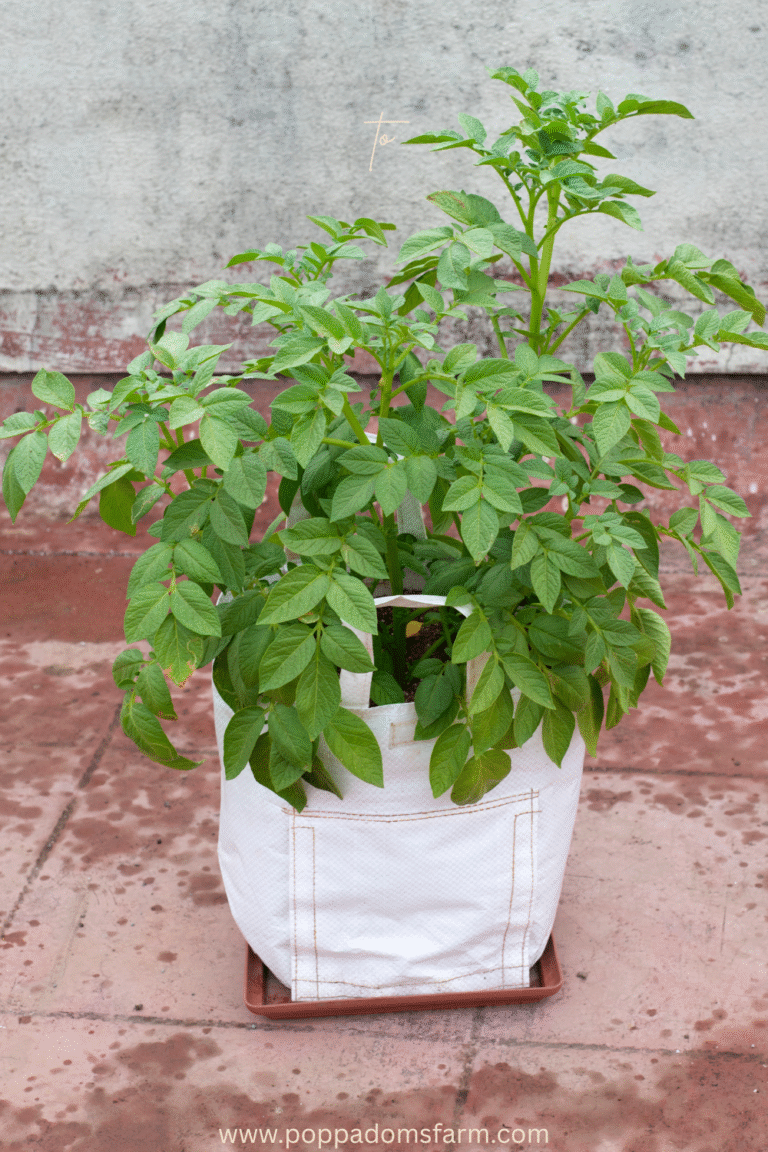
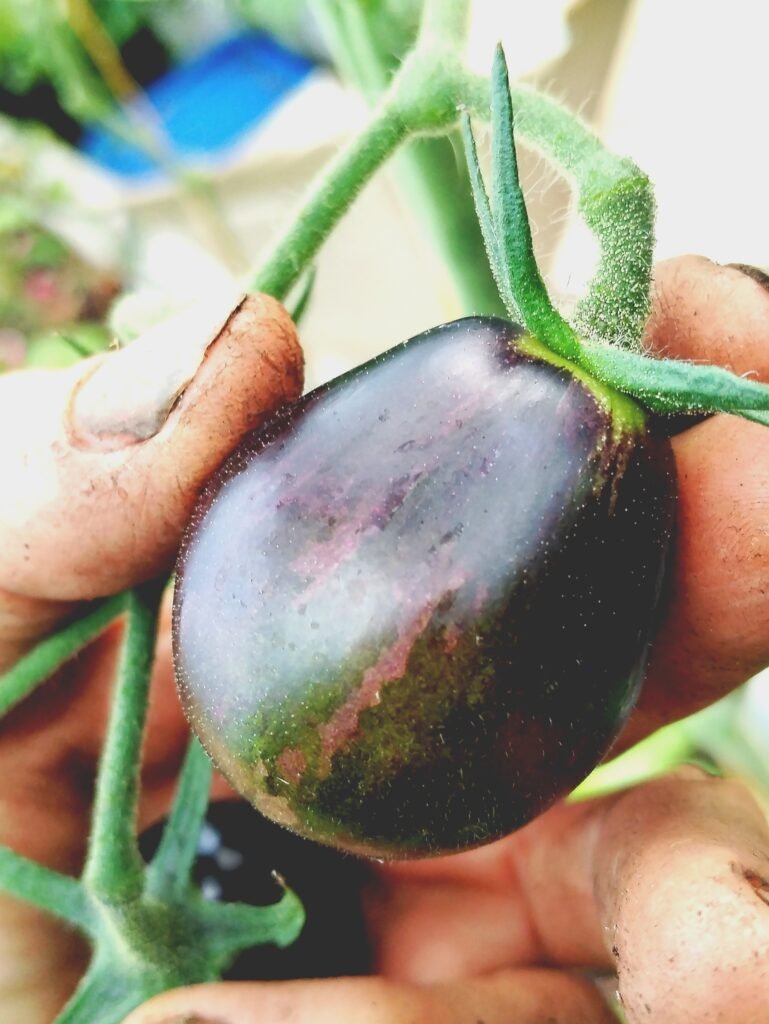

Have you ever found yourself dreaming of tomatoes beyond the standard supermarket fare? Unique tomato varieties are having a moment—and honestly, it’s about time. Gardeners across the globe are swapping out the usual reds for speckled purples, miniature cherries that grow in teacups, and even spiky, wild fruits! The latter look like they belong in a fairytale rather than a salad. And the best part? These quirky cultivars aren’t just beautiful! They’re often packed with unexpected flavors, better resilience, and stories that stretch back centuries.
Whether you’ve got a windowsill, a polytunnel, or a rambling cottage garden, there’s a weird and wonderful tomato out there just waiting to be grown. Whether you have only space for the tiniest micro tomatoes or get experimental with ancestral wild tomatoes, this is your chance to add a bit of tomato drama to your garden.
Growing these unusual varieties isn’t just a fun challenge—it’s a delicious adventure. Let’s explore the most delightful oddballs of the tomato world! Share growing tips for each one, and help you find the perfect plant to surprise your taste buds and your neighbors.
So, if your heart beats a little faster at the thought of golden pear-shaped fruits… this one’s for you. Let’s get weird.
What Makes a Tomato Variety ‘Unique’?
So, what exactly gives a tomato its “unique” badge of honor? Well, it’s not just about looks—though we do love a good stripe or splash of purple. A unique tomato variety often stands out in one or more ways: unusual shapes, unexpected colors, distinctive flavors (think smoky, fruity, or even spicy!), or an unconventional growth habit. Sometimes, it’s the story behind the seed that sets it apart—like a variety passed down through generations in a remote village or one rediscovered after nearly vanishing from existence.
Then there’s the fun of heirloom vs. hybrid. Heirlooms tend to carry that old-world charm—open-pollinated, rich in history, and often bursting with flavor. But hybrids can be just as exciting. Breeders have gotten creative in recent years, crafting new varieties with dazzling appearances or ultra-compact growth that’s perfect for small spaces.
And let’s not forget the why. Why are these offbeat beauties gaining popularity? Because gardeners (and eaters) are craving diversity. We want tomatoes that spark joy, that surprise us, that feel a little bit magical on the vine. Whether it’s for flavor, fun, or Instagram glory, more and more people are stepping beyond the standard red round tomato—and we love to see it.
Tiny But Mighty – Micro Tomato Varieties
Let’s talk about the tiniest tomatoes with the biggest personalities. Micro tomatoes are exactly what they sound like—miniature plants that can thrive in the smallest of spaces. Whether you’ve got a sunny windowsill, a little balcony, or just a pot on your kitchen counter, these pint-sized powerhouses are proof that you don’t need a big garden to grow your own food.
So, what makes a tomato a “micro”? Typically, these varieties grow just 6–12 inches tall but still manage to produce clusters of juicy, bite-sized fruit. They’re ideal for container growing and perfect for anyone short on space—or patience! These compact plants are fast to mature and oh-so-easy to manage.
Some micro varieties worth getting excited about include:
- Micro Tom – Often dubbed the world’s smallest tomato plant, this one’s practically made for growing in a teacup.
- Red Robin – A cheerful little bush with bright red fruit and a surprisingly robust flavor.
- Golden hour – As the name suggests, it is golden with dark shoulders and stripes.
Despite their size, micro tomatoes still need plenty of light—at least 6 hours of sunshine a day or a good-quality grow light if you’re growing indoors. As for pruning? Hardly any! Their tidy shape means they’re super low-maintenance.
And let’s not forget the reward. These little plants may not give you buckets of tomatoes, but the ones they do offer are bursting with flavor. Sweet, tangy, and incredibly fresh—it’s garden magic on a miniature scale.
Uncommon Colors – Beyond Red Tomatoes
Red may be the classic tomato color, but oh, what a rainbow awaits beyond the basics! If you’ve ever wanted your garden—or your plate—to look like something out of a fairy tale, these uncommon tomato colors are for you.
Let’s begin with the dramatic and mysterious blue and purple tomatoes, like the stunning Indigo Rose. These beauties owe their inky hues to anthocyanins, the same powerful antioxidants found in blueberries. Not only do they look striking on the vine, but they’re also packed with a little extra nutritional punch.
Next up, let’s wander into the pale and ghostly world of white or ivory tomatoes. Varieties like White Beauty and Great White offer a creamy, almost melon-like flavor that’s both sweet and mild. Their soft coloring adds a dreamy contrast to salads and makes them a talking point at any summer table.
And then, of course, there are the striped and multicolored showstoppers. Think Green Zebra, with its chartreuse skin and zingy bite, or Tigerella, whose bright red skin is streaked with gold like a sunset. These varieties don’t just look gorgeous—they bring a range of complex, sometimes citrusy flavors that elevate even the simplest dish.
When it comes to growing these colorful gems, they’re not much fussier than their red cousins. Just make sure they have plenty of sun, a well-draining soil, and regular watering. In the kitchen, they shine in fresh dishes—think Caprese salads, heirloom bruschetta, or sliced raw with a sprinkle of sea salt.
In short, growing tomatoes in every shade of the rainbow might be the easiest way to add a little whimsy—and wow—to your garden and your meals.
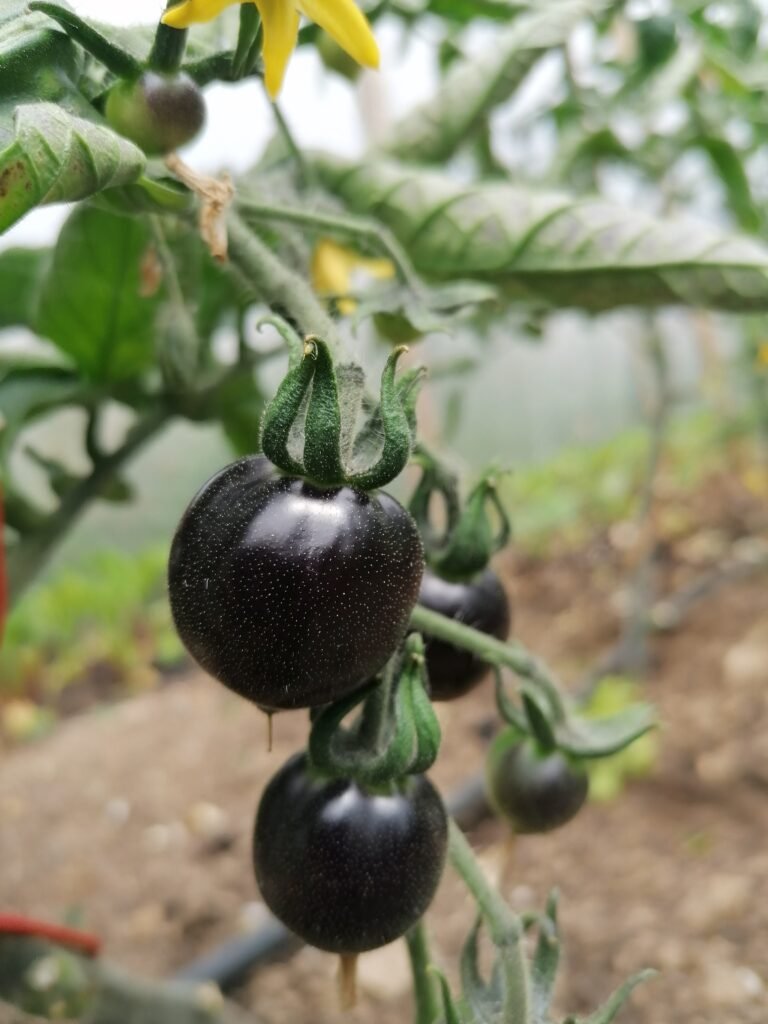


Wild & Spiny – Growing the Litchi Tomato and Other Curiosities
If you’ve ever felt like your tomato patch could use a little mischief and mystery, this is the section for you. Not all tomatoes are smooth-skinned and sweet—some come armed with spines, husks, and wild lineage that makes them perfect conversation starters in the garden.
Litchti tomato
Let’s begin with the showstopper, also known as Morelle de Balbis. With its dark, spiky stems and small ruby-red fruits wrapped in a thorny armor, it looks more like a medieval weapon than a salad ingredient. But don’t be fooled—its flavor is surprisingly pleasant, a little like cherry tomatoes with a hint of tartness. Originally native to South America, it thrives in warm weather and will reward you with prolific fruit if you can handle the prickles. Gloves are a must!
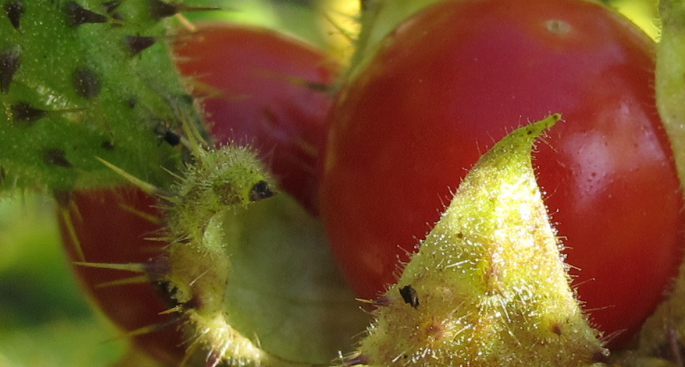
Currant tomato
Then there’s the Solanum pimpinellifolium—a truly wild ancestor of our modern varieties. The fruit is tiny, barely larger than a pea, but what it lacks in size it makes up for in abundance and intense, sweet-tart flavor. These vines are vigorous and can be a bit unruly, but they’re perfect for naturalized areas or for those who like a bit of wildness in their plots.
Tomatillo
Now, let’s not forget the Tomatillo, often mistaken for a green tomato, but actually a close cousin. Encased in a papery husk and bursting with zingy, citrusy flavor, tomatillos are the secret to a good salsa verde. They need a bit of space, and you’ll want to plant at least two for good pollination. Once ripe, the husks split open or fall off—nature’s way of saying, “time to pick!”
You might also stumble across other oddball relatives in the Solanum family—some edible, some best left admired from afar. As always, if you’re growing something unusual, take a moment to confirm it’s safe before sampling. Just because it’s tomato-adjacent doesn’t mean it’s salad-worthy.
Curious, spiny, tart, or tiny—these wild tomatoes and their cousins might not win beauty contests, but they’ll definitely win hearts. And maybe a few garden glares from unsuspecting guests!
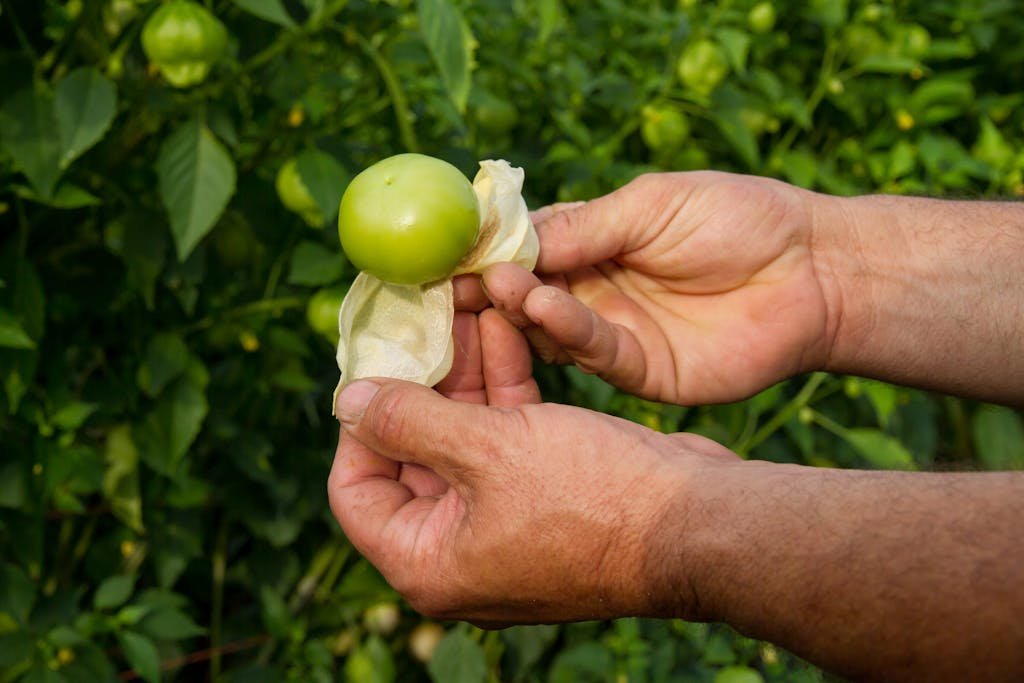
Decorative, Edible, and Unusual – Tomato Varieties That Make a Statement
Every garden deserves a bit of flair, and when it comes to tomatoes, some varieties seem to strut rather than grow. These are the plants that make visitors pause, lean in, and say, “Wait—what kind of tomato is that?”
Let’s start with foliage—because yes, even the leaves can surprise you. Potato-leaf tomatoes boast broad, smooth-edged leaves that look like, well, potatoes. They lend a softer, almost ornamental look to the plant and are often found on heirloom varieties known for rich, complex flavor. Some rare types even have a gentle fuzz on the stems and leaves, giving them a silvery shimmer in the morning light.
Next up: the pleated beauties. If you’re after tomatoes that look like they were hand-sculpted by an Italian artist, try varieties like Zapotec Pleated or Costoluto Genovese. Their deeply ridged, ribbed flesh isn’t just eye-catching—it holds sauces and dressings like little flavor basins, making them perfect for slicing or stuffing.
Of course, shape is another showstopper. From the plump pumpkin-shaped heirlooms to the dainty pear tomatoes and long, slender sausage types, these quirky forms are perfect for anyone who enjoys a bit of whimsy in their harvest basket.
Whether you’re snapping photos for your garden journal or putting together an irresistible market stall, these decorative and unusual tomatoes do more than taste good—they start conversations, brighten plates, and turn any tomato patch into a display of living art.
Wrapping Up: Embrace the Unusual in Your Tomato Patch
As we’ve journeyed through the world of unique tomato varieties, it’s clear that there’s a whole spectrum beyond the familiar reds. From the tiniest micro tomatoes perfect for windowsills to the spiny allure of the Litchi tomato, and the decorative charm of pleated or pear-shaped fruits, these unconventional varieties offer both visual delight and flavorful surprises.
But remember, cultivating these unique tomatoes requires a bit of know-how. Whether you’re planting in containers or open soil, understanding the basics is key. For a comprehensive guide on nurturing your tomato plants from seed to harvest, be sure to check out our detailed post on How to Grow Tomatoes.
For a visual feast and further inspiration, you might enjoy this video showcasing 30 incredible tomato varieties:

